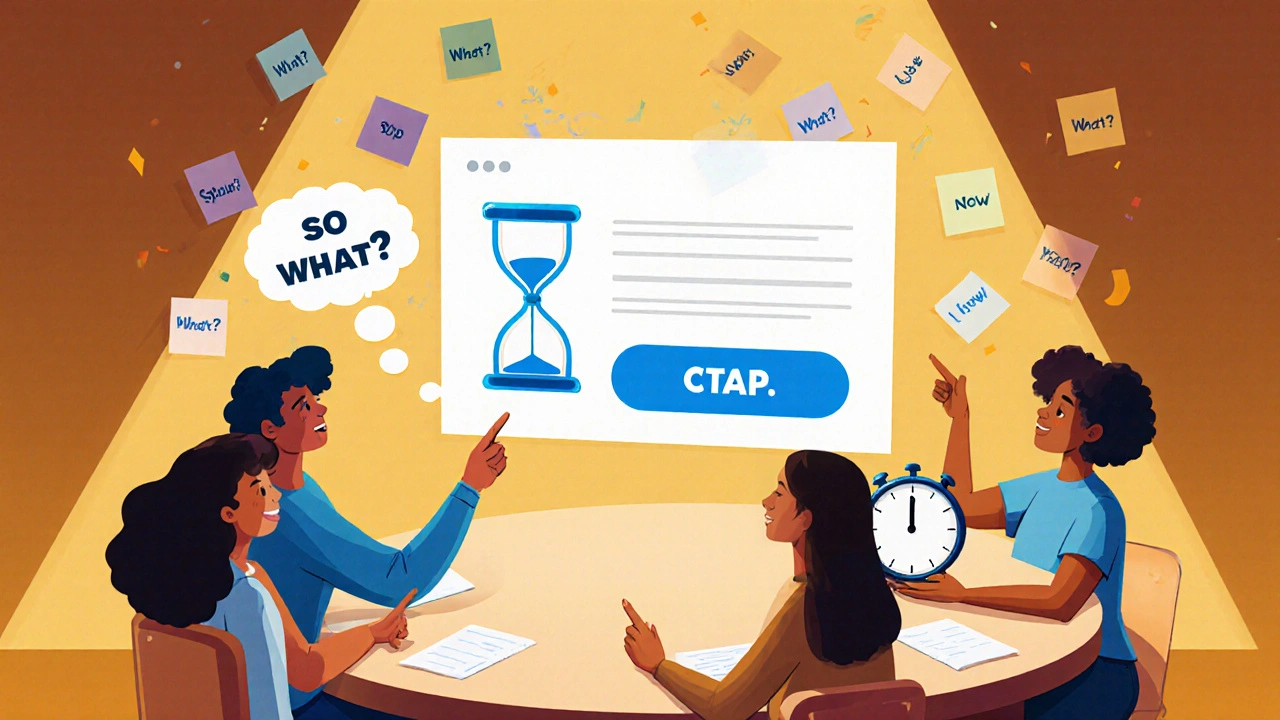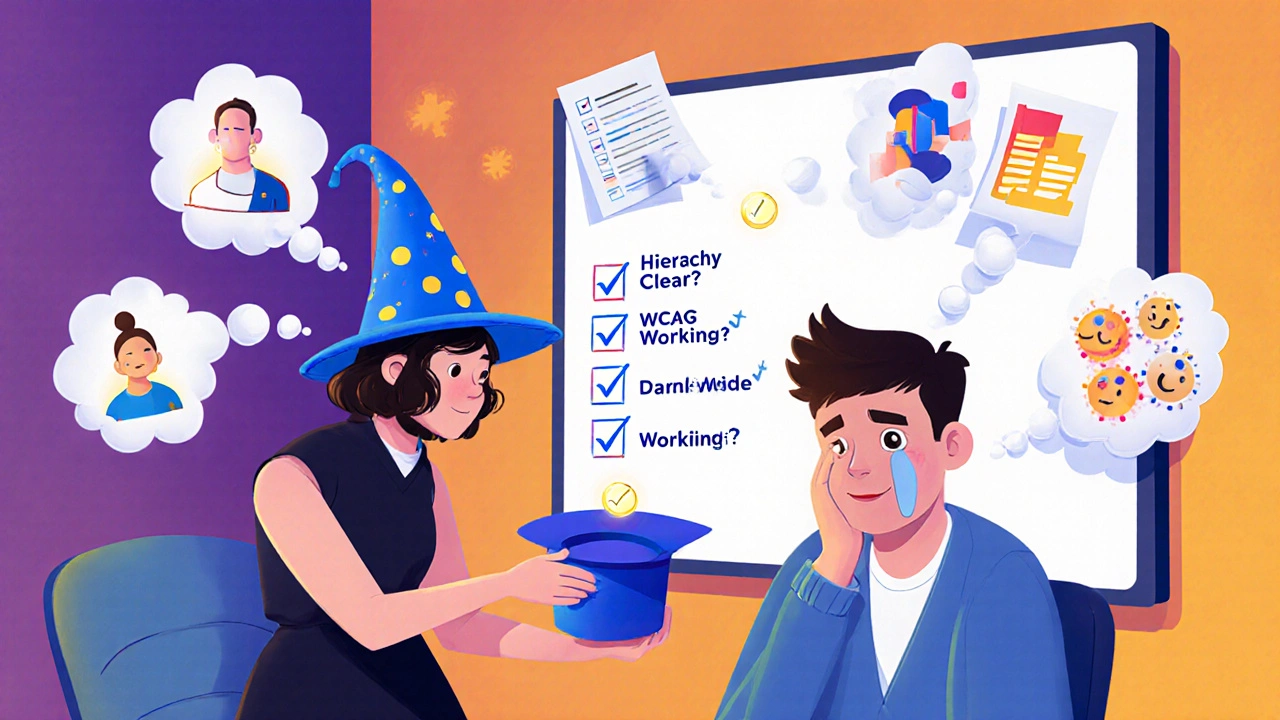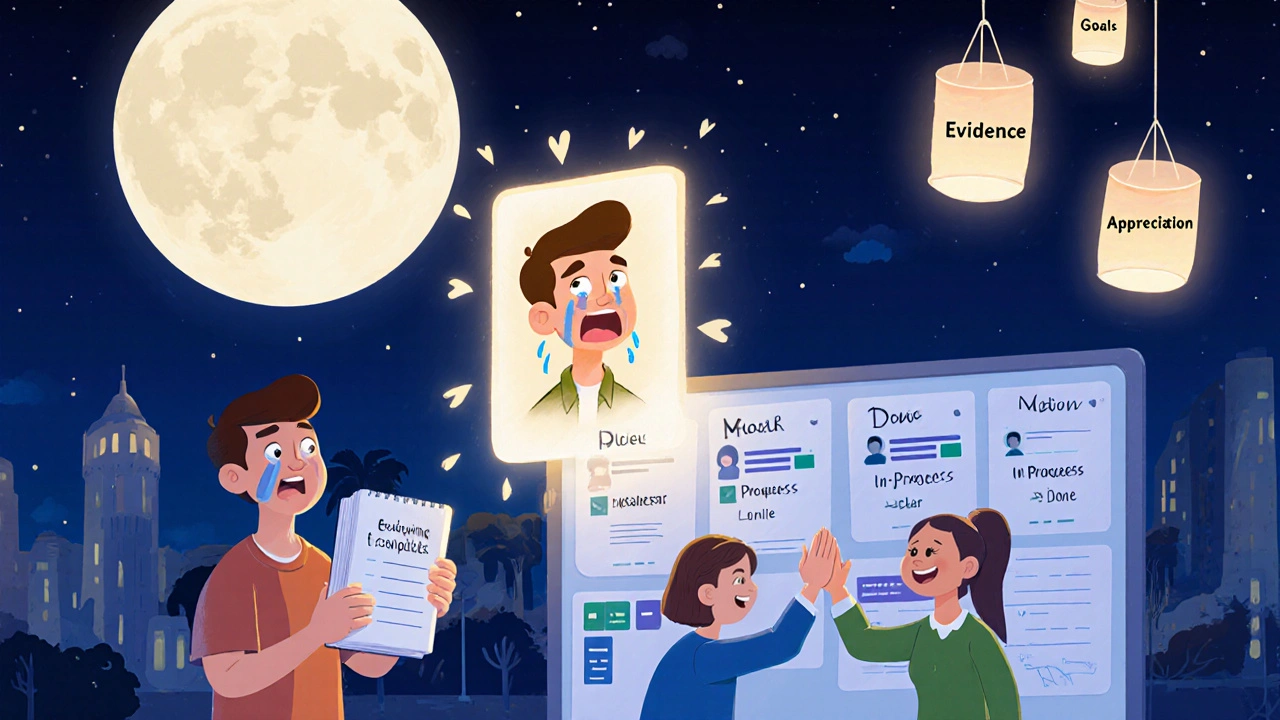Design Critique Workshops: How to Facilitate and Give Feedback That Actually Improves Work
 Aug, 29 2025
Aug, 29 2025
Why Design Critique Workshops Fail (And How to Fix Them)
Most design critique workshops feel like a waste of time. Someone shows a mockup, five people say "I like it," two people say "I don’t like it," and no one explains why. The designer walks away confused, frustrated, or worse - convinced their work is fine when it’s not. The problem isn’t the people. It’s the structure.
Effective critique isn’t about opinions. It’s about design critique as a tool for learning and iteration. When done right, it turns feedback into actionable insight. When done wrong, it kills creativity and trust.
What Makes a Good Design Critique Framework?
A solid framework gives everyone a clear role and a shared language. It prevents vague comments like "It feels off" and replaces them with specific observations. The best frameworks have three parts: preparation, structure during the session, and follow-up.
Start with preparation. Send the design work ahead of time - not just the file, but the context. What problem are they solving? Who’s the user? What constraints exist? Without this, feedback is guesswork. One team I worked with started including a one-paragraph brief with every submission. Critique quality jumped 60% in two months.
During the session, use a structured method like the What? So What? Now What? framework:
- What? - Describe what you see. No opinions yet. "The CTA button is blue, centered, and 40px tall."
- So What? - Explain the impact. "Blue doesn’t contrast well with the background, so users might miss it. Centered placement breaks the F-pattern scan most users follow."
- Now What? - Suggest a direction. "Try moving it to the right side, using a high-contrast orange, and testing it with a heatmap tool."
This keeps feedback focused, objective, and forward-moving. No one gets defensive because the goal isn’t to judge - it’s to improve.
Facilitation Is the Secret Ingredient
Facilitation isn’t about being the loudest person in the room. It’s about creating safety and focus. A bad facilitator lets one person dominate. A good one pulls quiet voices forward.
Here’s how to do it:
- Set ground rules before you start. No personal attacks. No "I hate this." Only "This doesn’t work because..."
- Use timed turns. Give each person 90 seconds to speak. Use a timer. This prevents rambling and keeps energy high.
- Ask for evidence. "Can you point to where you saw that behavior in the research?" or "Which user persona does this align with?"
- Call out silence. "I haven’t heard from the UX researcher yet - what’s your take?" This ensures diverse perspectives aren’t lost.
One design team in Portland started using a "feedback hat" - a physical object passed around. Only the person holding it could speak. Simple? Yes. Effective? Absolutely. They went from 30% of feedback being ignored to 85% being acted on.
Feedback Frameworks That Actually Work
Not all frameworks are created equal. Here are three proven ones, with when to use them:
| Framework | Best For | Key Strength | Limitation |
|---|---|---|---|
| What? So What? Now What? | New designers, early-stage concepts | Builds clarity and empathy | Can feel too slow for iterative rounds |
| Critique Circle (Karl Fast) | Team reviews, mid-fidelity prototypes | Encourages multiple perspectives | Requires strong facilitation |
| Design Critique Checklist (Google) | High-fidelity designs, final reviews | Systematic, covers usability, accessibility, consistency | Too rigid for early ideation |
The Google checklist is especially useful for final reviews. It includes items like:
- Is the hierarchy clear at a glance?
- Does the color scheme meet WCAG contrast standards?
- Are all interactive elements labeled correctly?
- Does the design work in dark mode?
Teams that use this checklist report 40% fewer post-launch bugs related to design decisions.

How to Give Feedback Without Sounding Like a Jerk
Feedback hurts - even when it’s good. That’s why delivery matters more than content. Here’s how to make it land:
- Start with what works. "I really like how you simplified the onboarding flow. That’s a huge improvement."
- Use "I" statements. "I got confused when I clicked here" instead of "This is confusing."
- Anchor feedback in goals. "The goal was to reduce support calls. This screen adds three extra steps - that might increase them."
- Don’t fix it for them. Say, "Have you considered moving this button here?" instead of "You should move this button."
One designer told me she used to cry after critiques. Now she looks forward to them. Why? Her team started ending every session with one thing they appreciated. That small shift changed the whole culture.
What to Do After the Critique
The critique doesn’t end when the meeting does. In fact, that’s when the real work begins.
Assign someone to summarize the feedback within 24 hours. Include:
- Key insights (not just comments)
- Actions agreed on
- Owner for each action
- Deadline
Then, schedule a follow-up. Not in a week - in three days. That’s when the feedback is still fresh, and the designer hasn’t moved on. This creates accountability without pressure.
Teams that do this consistently see 50% faster iteration cycles. They stop going in circles. They start making progress.
Common Mistakes (And How to Avoid Them)
Here’s what usually goes wrong - and how to fix it:
- Mistake: People give feedback based on personal taste. Fix: Redirect to goals. "What user need does this address?"
- Mistake: The designer gets defensive. Fix: Normalize critique as part of the process. Say, "This isn’t about your skill - it’s about making the product better."
- Mistake: Feedback isn’t tracked. Fix: Use a shared doc or Notion board. Every comment gets a status: "Reviewed," "In Progress," "Done."
- Mistake: Only senior designers give feedback. Fix: Invite junior team members, support staff, even customer service. They see what the designers don’t.

When to Skip the Critique
Not every design needs a formal critique. Skip it if:
- The idea is still in sketch form - too early for detailed feedback
- There’s no clear goal or user context
- The team is burned out - forcing critique when morale is low backfires
- You’re in a sprint and need to ship - save critique for the next cycle
Critique isn’t a ritual. It’s a tool. Use it when it adds value. Skip it when it doesn’t.
Building a Critique Culture
The best teams don’t just run critique workshops - they live them. Critique becomes part of how they talk, think, and improve.
Start small. Pick one weekly design sync. Use the What? So What? Now What? method. Track how many feedback points lead to changes. After a month, ask the team: "Do you feel heard?" If the answer is yes, scale it. If not, tweak the process.
Over time, you’ll notice something unexpected: designers start giving better feedback to themselves. They ask, "What’s the goal here?" before they even show their work. That’s when you know the culture has shifted.
What’s the difference between a design critique and a review?
A review is usually a gate - a yes/no decision before moving forward. A critique is a learning tool. It’s open-ended, focused on improvement, and doesn’t block progress. You can have multiple critiques in one project. You only have one final review.
How often should we run design critique workshops?
Once a week works for most teams. If you’re in active development, twice a week is fine. But don’t do it every day - you’ll burn people out. The goal is rhythm, not frequency. Quality feedback matters more than how often you do it.
Can remote teams do effective critiques?
Yes - but they need better tools. Use Miro or Figma for live annotation. Record sessions so people can replay them. Use breakout rooms for small-group feedback before the full team debrief. And always send the work ahead of time. Remote critiques fail when people show up unprepared.
What if someone gives bad feedback - like "I just don’t like it"?
Don’t shut them down. Ask, "What about it makes you feel that way?" or "Can you point to something specific?" Most people have a reason - they just don’t know how to say it. Guide them to connect their feeling to a design principle or user need.
How do you handle criticism from non-designers?
Listen. Non-designers often spot usability issues designers miss because they’re too close to the work. A customer support rep might say, "Users keep calling about this button," and that’s gold. Translate their feedback into design terms - but don’t dismiss it just because they’re not a designer.
Next Steps
Start your next design session with this: send the work 24 hours ahead, set a timer, use the What? So What? Now What? structure, and end with one thing you appreciated. That’s it. No fancy tools. No big meetings. Just structure and respect.
After three weeks, you’ll see the difference. Your designs will improve. Your team will trust each other more. And you’ll stop wasting time on feedback that goes nowhere.
Kieran Danagher
November 17, 2025 AT 11:15Rocky Wyatt
November 18, 2025 AT 10:29Santhosh Santhosh
November 19, 2025 AT 20:23Veera Mavalwala
November 20, 2025 AT 04:59Ray Htoo
November 20, 2025 AT 07:48Natasha Madison
November 20, 2025 AT 21:00Sheila Alston
November 22, 2025 AT 07:34sampa Karjee
November 23, 2025 AT 00:54Patrick Sieber
November 24, 2025 AT 18:40OONAGH Ffrench
November 25, 2025 AT 14:35poonam upadhyay
November 26, 2025 AT 04:38Shivam Mogha
November 27, 2025 AT 03:41mani kandan
November 28, 2025 AT 08:32Rahul Borole
November 29, 2025 AT 21:56Sheetal Srivastava
November 30, 2025 AT 20:24